Best Firewood Processors 2025
- September 14, 2023
- 0 comment
Firewood is more than just logs burning in a fireplace; it’s a source of warmth and comfort, especially during chilly seasons. Quality firewood is essential for efficient heating, whether you’re cozying up at home or gathering around a campfire. For those looking to streamline their firewood preparation, a firewood processor is a game-changer. This powerful tool not only simplifies the task of cutting and splitting logs but also ensures each piece is uniform, making it easier to store and burn. In this guide, we’ll dive into what makes a firewood processor stand out, helping you choose the best one to meet your heating needs efficiently.
Key Features to Consider Buying Firewood Processor
- Efficiency: How much wood can it process in an hour? This determines its suitability for personal or commercial use.
- Portability: Wheels, trailer mounts, or skid steer attachments can determine how easy it is to move.
- Power Source: They can be PTO-driven (hooked to a tractor), gas-powered, or electric.
- Log Diameter Capacity: The maximum size of logs it can handle.
- Splitting Force: Measured in tons, this indicates the strength of the machine.
- Safety Features: Essential to prevent accidents.
1. Brute Force 20-24
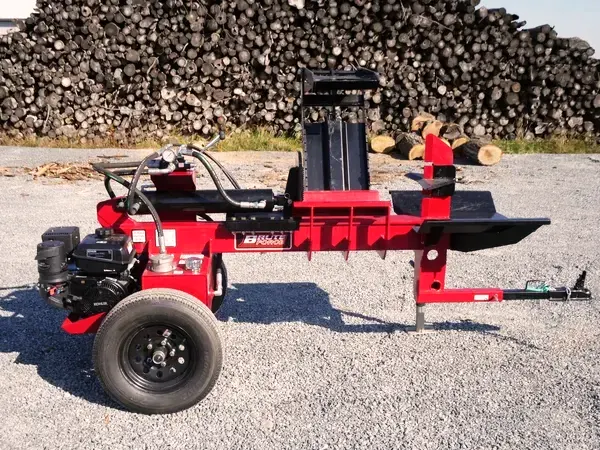
Quick Specifications
- 28-ton splitting force
- 24-inch splitting cylinder
- 4-way hydraulically adjustable wedge
- Hydraulic log lift
- Fenders
- 19-horsepower Honda EFI engine
- Oil cooler
- Left or right operation
The Brute Force 20-24 firewood processor isn’t just a machine; it’s a robust, meticulously designed marvel that redefines durability and efficiency. Constructed with premium materials, this processor stands up to the daily grind of heavy-duty operations, minimizing breakdowns and maintenance interruptions. Its robust build ensures that it remains reliable over time, a critical factor for businesses that rely on continuous operation.
Beyond its sturdy construction, the Brute Force 20-24 impresses with its advanced mechanical systems that enhance its operational efficiency. The seamless integration of the cutter and splitter enables not only swift processing speeds but also ensures that each task is performed with precision. This mechanical synergy allows for a smooth workflow, handling even large logs with ease. The efficient log management system further streamlines the process by reducing the need for manual intervention, saving time, and maintaining consistent output quality. This combination of advanced design and practical functionality makes the Brute Force 20-24 a standout choice for anyone in need of a reliable and effective firewood processor.
2. Hud-Son Wolverine M
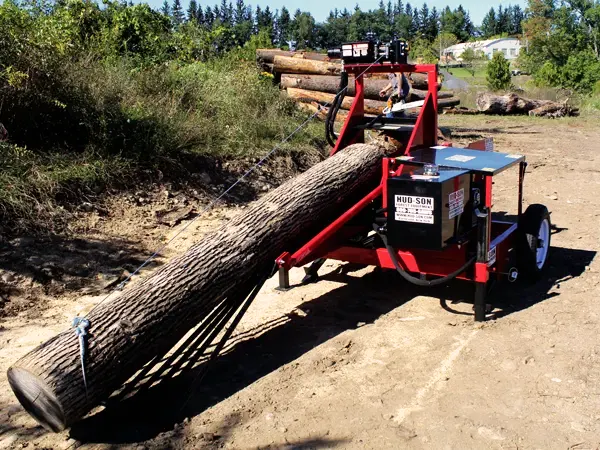
Quick Specifications
- 4-axis CNC milling machine
- Working area: 16 x 16 x 12 inches
- Maximum spindle speed: 10,000 RPM
- Maximum feed rate: 150 IPM
- Powered by a 4-HP spindle motor
- 2-stage hydraulic pump
- 24-inch splitter stroke
- 2 and 4-way wedge splitter
- Portable design
The Hud-Son Wolverine M firewood processor, despite being marketed as an ‘entry-level’ model, delivers an impressive array of features that surpass this basic classification. It is designed with user-friendliness at its core, making it exceptionally accessible for home users. The control panel is straightforward, simplifying the learning process for those new to using such equipment. This ease of use is crucial for enabling users to operate the machine efficiently without a steep learning curve.
Safety is a paramount feature of the Wolverine M, reflecting its design ethos focused on domestic use. It incorporates several safety features, such as emergency stop buttons and protective guards, to protect users from operational hazards. These features are complemented by clear operational guidelines that enhance safe usage practices. Despite its compact size, which makes it ideal for smaller spaces like garages, the Wolverine M does not compromise on performance. It houses a powerful engine that ensures each log cut is precise and efficient, making this processor not just convenient but also potent and reliable for preparing high-quality firewood.
3. Bell’s Machining 4000 Series
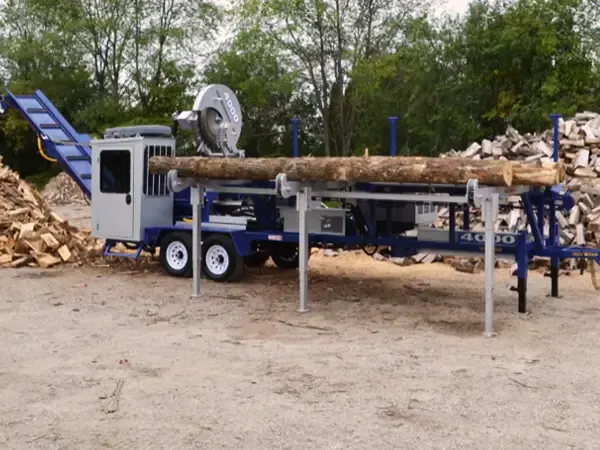
Quick Specifications
- 60-horsepower CAT diesel engine
- 30-ton splitter cylinder
- Adjustable splitter head
- Auto hydraulic chainsaw
- Single joystick control
- 2-strand hydraulic live deck
- Cuts logs up to 22 inches in diameter and 20 feet long
- 4-second splitter cycle time
- Processes up to 3 cords per hour with a bar saw; 4 cords with a circular saw
- Weight: 6,800 lbs
The Bell’s Machining 4000 Series stands as a paragon of excellence in the wood processing industry, often hailed as the gold standard for its robust capabilities and advanced features. This series is engineered to handle a diverse range of wood types and sizes, offering customizable settings that allow operators to tailor the machine’s operations to specific requirements. This adaptability ensures that each piece of wood is processed with precision, enhancing both efficiency and the quality of the final product.
Beyond its technical prowess, the 4000 Series is designed with the operator in mind. It features an ergonomic layout that minimizes physical strain and maximizes comfort, even during extended periods of use. Controls are easily accessible, and seating is designed for sustained comfort, which is crucial for productivity and operator well-being. Additionally, the series is equipped with advanced maintenance alert systems that notify operators of potential issues before they become problematic, thereby maintaining consistent performance and prolonging the machine’s lifespan. This blend of precision, comfort, and proactive maintenance sets the Bell’s Machining 4000 Series apart as a top choice in modern wood processing.
4. DYNA SC-12 XP
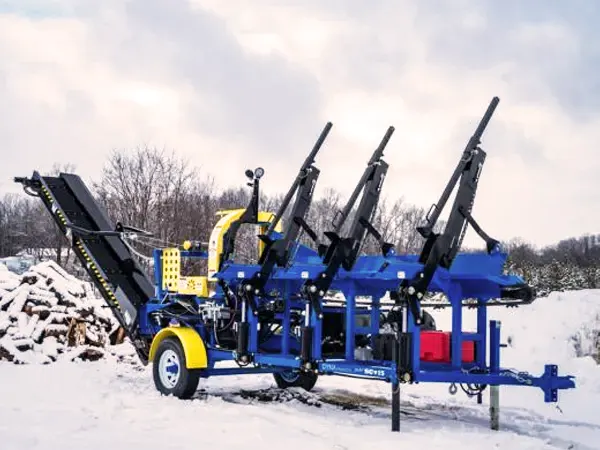
Quick Specifications
- 20-horsepower Honda gas engine
- 18-inch harvester bar and chain
- 4-way wedge splitter
- 10-foot conveyor belt
- Maximum log diameter: 15 inches
- Maximum log length: 10 feet
- Splitting cycle time: 10 seconds
- Transport dimensions: 52″ L x 190″ W x 96″ H
- Weight: 2,500 pounds
The DYNA SC-12 XP is a stellar example of how compact design can harmonize with high functionality in modern machinery. Despite its small footprint, this firewood processor is a powerhouse of versatility. It not only cuts and splits wood with precision but in some models, offers the added benefit of debarking, making it a multifunctional tool that negates the need for multiple machines. This capability makes it ideal for operators looking to streamline their workflow and save on both time and space.
Moreover, the DYNA SC-12 XP is designed with energy efficiency at its core, reflecting a commitment to sustainable operation. It balances robust performance with minimal energy consumption, which not only reduces operational costs but also supports eco-friendly practices. Additionally, its intelligent design includes integrated storage solutions for tools and accessories, enhancing its practicality in space-constrained settings. This thoughtful integration of storage maximizes workspace efficiency and makes the DYNA SC-12 XP particularly suitable for smaller workshops or outdoor areas where space is a premium.
5. Multitek 1620SS
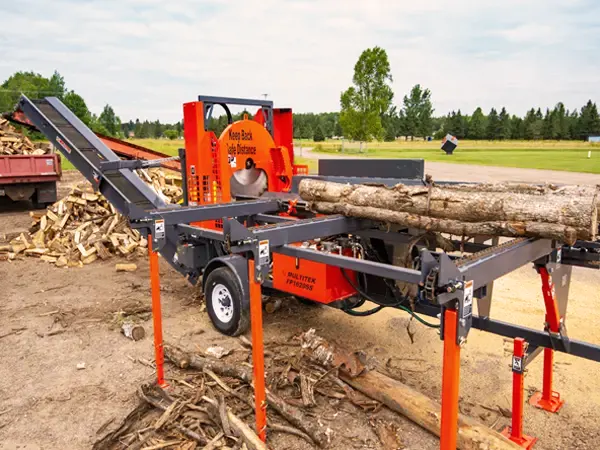
Quick Specifications
- 40-inch circular saw with carbide insert teeth
- 20 tons of splitting force
- 4.5-second splitter cycle time
- Maximum log length: 20 feet
- Maximum log diameter: 18 inches
- Minimum log diameter: 3 inches
- Transport length: 24 feet
- Weight: 5,800 pounds
- Powered by a 44-horsepower Kubota diesel engine
The Multitek 1620SS stands out as a hallmark of resilience and technological advancement in the wood processing industry. Its construction is a direct reflection of enduring commitment, made from high-quality materials that assure longevity and robust performance. This processor has been meticulously designed to endure the rigorous demands of heavy, consistent use, showcasing its reliability and making it a trustworthy tool for any serious wood processing operation.
Moreover, the Multitek 1620SS incorporates semi-automated features that streamline the wood processing experience, minimizing the need for manual intervention and thereby reducing human error. This automation enhances productivity by ensuring consistent results and faster throughput. The processor’s efficiency is further exemplified in its capability to manage multiple tasks simultaneously with its multi-way splitters and quick-cycle times, ensuring operators can maximize output while minimizing effort and time invested. This blend of durability, automation, and efficiency makes the 1620SS a top-tier choice for professionals in the forestry sector.
Maintenance is Key
- A Machine’s Lifeline: Every piece of machinery, regardless of its sophistication or brand reputation, is bound by a universal truth: Its efficiency and longevity are heavily influenced by the care it receives. The firewood processor, which is an intricate blend of mechanics and function, is no exception to this rule.
- Beyond Initial Excellence: Purchasing a top-tier firewood processor may seem like a guarantee of long-term performance, but the machine’s true potential is unlocked only when paired with diligent maintenance. No matter how advanced or robust the initial design, neglect in the maintenance department can rapidly diminish its efficacy.
- Regular Checks: The Heartbeat Monitor: The hydraulic system of a firewood processor is like its circulatory system, responsible for smooth operations and transitions. Regularly monitoring this system is crucial. It ensures that potential issues, such as leaks or pressure inconsistencies, are caught early, safeguarding against sudden breakdowns or performance drops.
- Cleaning: More Than Aesthetic: Keeping a firewood processor clean goes beyond preserving its aesthetic appeal. Over time, debris and residue can accumulate, potentially obstructing mechanisms or causing premature wear of vital components. Regular cleaning ensures that the processor remains in optimal condition, free from obstructions and external contaminants.
- Sharpness Equals Efficiency: The blades of a firewood processor bear the brunt of the machine’s primary function. As they wear down, the machine has to work harder, often leading to uneven cuts and increased strain on the system. Regular sharpening ensures that blades remain at their peak performance, offering precise cuts while reducing the overall operational strain.
Conclusion
Selecting the right firewood processor is all about understanding your needs. Whether you’re looking for a machine for personal use or running a commercial firewood business, there’s a processor out there that’s perfect for you. Remember, the best firewood is the result of both nature and technology, working together in harmony.
FAQs
- Why is the size of the firewood processor’s blade important?
The blade‘s size determines the size of logs the processor can handle. Larger blades can tackle bigger logs, while smaller ones are more suited for thinner logs. - How does the speed of the conveyor affect the processor’s efficiency?
The conveyor speed affects how quickly split wood is moved out of the machine, freeing space for the next log. Faster conveyors can enhance productivity, but they should be matched with the processor’s overall splitting speed. - Can a firewood processor handle different types of wood?
While most processors can handle a variety of woods, the density and moisture content of different wood types might affect performance. It’s always recommended to check the manufacturer’s guidelines. - Why is regular maintenance vital for an eco-friendly operation?
A well-maintained firewood processor ensures cleaner cuts, leading to more efficient burning of logs. This results in fewer emissions when the wood is burned. - How do multi-way splitters improve efficiency?
Multi-way splitters can divide logs into multiple pieces in a single pass, drastically reducing the time taken to process a single log. - Do firewood processors consume a lot of energy?
Modern firewood processors are designed to be energy-efficient. However, consumption varies based on the machine’s size, operations, and the load it handles. - Is it possible to rent a firewood processor?
Yes, many companies offer rental services for firewood processors. It’s a popular choice for those who don’t need to use the machine year-round. - How does the moisture content of logs affect the processor?
Logs with high moisture content can be harder to split and may wear out blades or components faster. It’s essential to use well-seasoned logs for optimal performance. - 9. Are there safety features I should look for when buying a firewood processor?
Modern processors come with several safety features, including emergency stop buttons, protective guards, and safety interlocks. Always ensure the machine meets the necessary safety standards. - How does a firewood processor’s output differ from traditional log-splitting methods?
Firewood processors are typically faster and more consistent than manual methods. They can produce uniform-sized pieces, ensuring consistent burning when used as fuel.
We’d love to hear from you! Share your personal experiences and thoughts about the Best Firewood Processors of 2025 in the comments section below. Your insights could greatly benefit fellow users and those considering an upgrade this year!

David Murray
Forestry AuthorI'm David Murry, a forestry equipment specialist with a focus on chainsaw operation. With over 13 years of experience, I've honed my skills in operating and maintaining a wide range of machinery, from chainsaws to log splitters. My passion for the outdoors and commitment to sustainable forestry drive my work, which emphasizes safety, efficiency, and staying updated with industry advancements. Additionally, I'm dedicated to sharing my expertise and promoting environmental awareness within the forestry community.








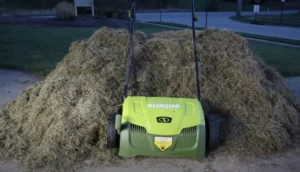




Leave your comment